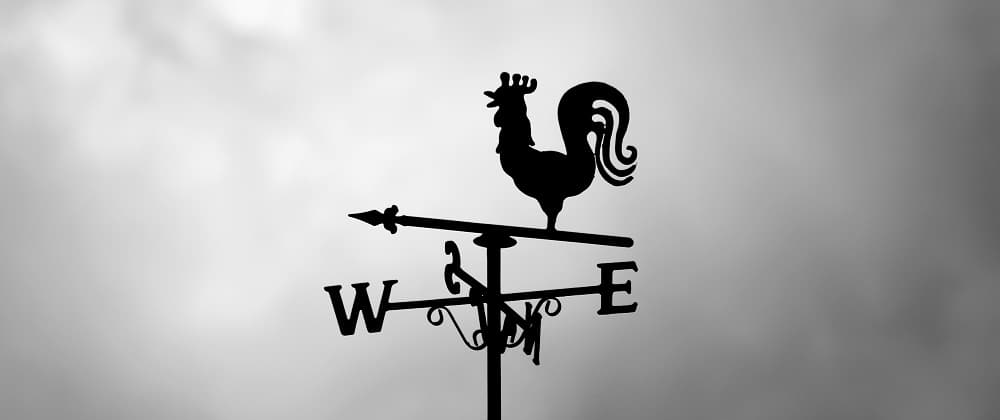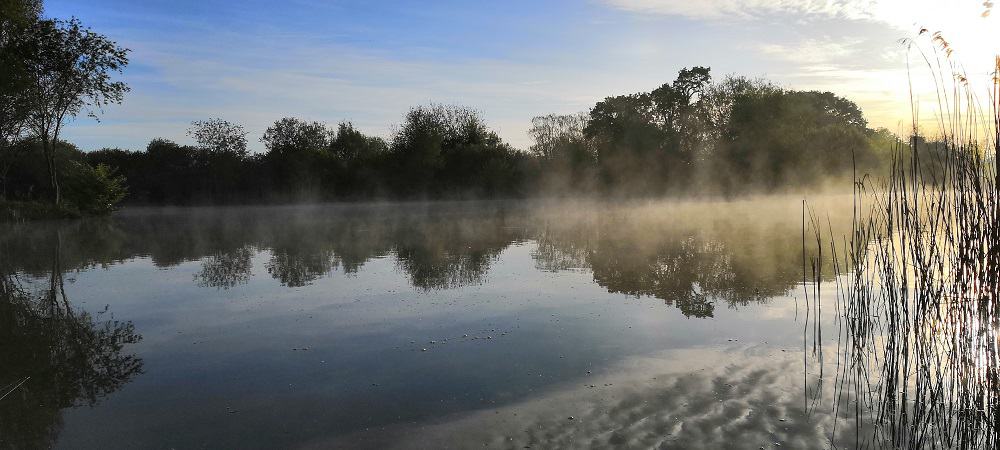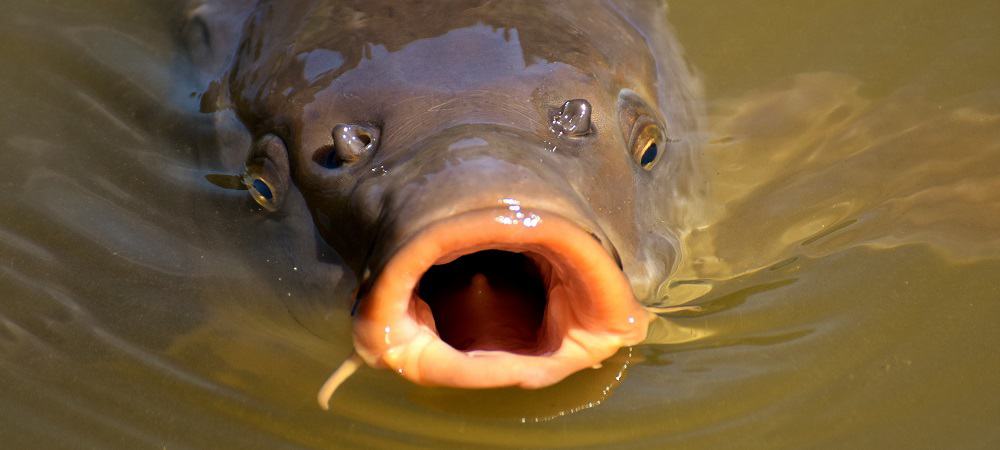Watercraft is, without doubt, the most important aspect of carp fishing. You can spend thousands of pounds on the best bivvy, bedchair, bite alarms, rods, reels etc. You can even spend a ridiculous amount of money on your terminal tackle and bait, but if you cannot read a lake or river and build up a picture of where the carp are likely to be situated, you won’t be nearly as successful as you could be.
Watercraft is effectively the understanding of why carp behave the way that they do, so getting a grasp of it can be an enormous advantage.
With many anglers being drawn in by the powerful marketing of the major brands, they race out to buy the equipment that they require in order to tempt the specimens that they see all over social media. Unfortunately, this can lead to a lot of them having “all the gear, but no idea” and they start to wonder their nets remain dry.
Fishing the same water regularly can help you to learn the habits of the carp and enable you to pin down their whereabouts without thinking too much about it. However, all waters are different and there are certain things that you can do to locate them more easily, even when fishing somewhere for the first time.
Let’s take a look at some of the fundamentals of watercraft and how these tactics can help you to put more fish on the bank.
Research The Lake
If you have never fished a lake before, your watercraft can begin before your trip starts by searching online for any information that you can find. The more popular the lake is, the more chance there is of finding out some tips and tricks about the best bait, tactics or areas to fish. If you are stuck for ideas of where to fish next, you can always take a look at the best day ticket lakes in the UK.

Weather
Another aspect of watercraft that you can always do before a fishing trip is to look at the weather forecast. While the predicted conditions can change if you check too far in advance, they are normally quite accurate a couple of days before your trip.
I always check the weather forecast for:
- The air pressure
- The wind direction
- The temperature
I won’t go into too much detail about air pressure as I wrote a separate article about it, but I always look for either low air pressure or, better still, a pattern where the air pressure is falling.
Wind direction is also covered in the air pressure article, but a general rule of thumb in the UK is that winds from the north and the east are associated with colder temperatures, while winds from the south and the west are linked with warmer conditions.
Temperature is something that doesn’t concern me too much as tactics can always be adjusted to suit the conditions and to find what depth the carp are at in the water column. However, if I have the luxury of being able to choose, I will try to fish when the temperature is forecast to be falling.
View The Lake On Google Maps
If you haven’t fished the lake before, then I highly recommend taking a look at it on Google Maps.
After checking the weather forecast, you will be able to then see which pegs will be facing the wind and which pegs will be on the back of the wind. Depending on how up-to-date the satellite image is, you will also be able to see any islands, trees or other features you may have in your potential peg, and you can even check where the car park and other facilities are.
While all of the above can provide a good insight into your peg, my single favourite feature of Google Maps is the ability to be able to measure distances. Although this may not sound like much of an advantage, being able to measure potential peg boundaries, distance to features etc can be worth its weight in gold and give your watercraft a headstart before you have arrived in your chosen peg.
Walk Around The Lake…..Twice!
One of the fundamental elements of watercraft is to familiarise yourself with your chosen venue. The first thing I do when I arrive at the lake, even if I have fished it many times before, is to walk around the perimeter. If the lake isn’t too big, I will walk around it twice, constantly looking for tell-tale signs of carp.

As I walk around the lake, I will be keeping my eyes open for:
- Bubbles: While small amounts of bubbles could be attributed to gas escaping from chod or detritus on the bottom of the lake, the likelihood is that they are being caused by a carp feeding (or at least looking for food).
- Cloudy water: We mentioned that bubbles can be an indication that carp might be in the area, while cloudy water almost certainly means that they are in the area. If a carp is frantically rooting around on the lake bed, the water will cloud up in no time, especially in the shallower areas.
- Movement: If the reeds, lily pads, sunken branches etc are moving, you can bet that a carp has something to do with it.
- Showing carp: Whether the carp are head and shouldering or just rolling, we should always be on the lookout for these obvious giveaways. Knowing that they are at least in the vicinity gives us an immediate advantage.
Trending: Do you use a spod or a spomb to bait up? These are some of the best braids on the market
Visible Features
The ability to identify features, both underwater and above the water, is an important part of developing your watercraft skills. Before I settle into a peg, I always concentrate on the features that I can see, paying particular attention to:
- Margins: I regularly fish in the near margins, mainly because my long-distance casting accuracy is terrible! (The far margins should never be ignored either). Carp love the margins as they often find food there and they will also use them as a patrol route.
- Islands: If a lake has an island, there is a high possibility that it is the most popular feature on the lake. Even though they experience a lot of attention from anglers, islands should never be dismissed as carp are naturally drawn to them.
- The horizon: If you are fishing a big lake with no visible features, those extra few yards on a cast can become a huge advantage. If anglers are regularly fishing at 140yds, but you can hit 150yds, you have the benefit of being able to present a bait in an area where not many others can.
Locate The Birdlife
Ask any angler who is serious about watercraft and they will tell you that watching the birdlife can sometimes give some clues as to the whereabouts of the carp.
If you see ducks diving in the water and then quickly flying away, or a swan who is floating through the vicinity and rapidly changes direction, it can be an indicator that carp are in the area.

Equally, it is worth keeping an eye out for birds who are devouring insects. Carp are also big fans of these tasty morsels and will never be too far away from a hatching.
Lake Depth And Lake Bed
Once I have settled into my peg (assuming it is one that I haven’t fished before) I will spend a bit of time with a feature finding lead and a marker float to try and build up a picture of what I have in front of me. Finding out whether you are fishing over gravel, silt or clay, and in shallow or deep water can really help you decide what tactics to employ. It is also good practice to record what you find, so you don’t have to repeat those formalities if you ever end up in the same peg again.
In the spring time, I will look for the shallower areas of water that warm up more quickly. The carp that have perked up the fastest from their winter slumber should be actively looking for food, and these will be the best areas to produce a bite.

In the wintertime, it is the deeper areas that I will explore first. The water temperature remains quite stable during the colder months, so while the upper layers may experience a variation of a few degrees due to strong winds mixing the water, the temperature in the lower layers will remain more consistent. This is more appealing to carp and you may find that they congregate in small groups and don’t move around too much, so if you can locate them and present a bait in close proximity, you have a good chance of nicking a bite.
Patrol Routes
Carp will often spend much of their day cruising around the lake looking for food. They know the areas in which to look for natural food and, being creatures of habit, they will rarely deviate from their regular patrol routes that link these areas. While it would be nigh on impossible to identify these patrol routes when fishing a lake for the first time, it shouldn’t take too many sessions to start to build up a picture of where the carp tend to be at certain times of the day.
Many of you will be aware that different lakes have different “bite times”, and this can possibly be attributed to the fact that carp have feeding areas and rest areas within their patrol route.
Feeding Areas
As carp move through their patrol route, they will stop at their recognised feeding areas. These areas will usually be rich in natural foods, so the carp know that when they stop off, a tasty snack often awaits them.
If you can identify these feeding areas and are able to present a bait there, you may be able to trip the carp up and tempt them into feeding. I tend to use natural baits or something neutrally coloured so as not to draw too much attention to it, but other anglers have been successful with more obvious baits too.
Rest Areas
Although carp are greedy, that doesn’t mean that they necessarily always want to feed. There will always be certain times of the day and certain areas of the lake where they switch off altogether.
With that being said, it doesn’t always mean that they cannot be tempted to break their habit and feed on something a little bit out of the ordinary. When the carp are in their rest areas and aren’t actively looking to feed, sometimes a high-visibility, high attraction single hook bait can prove to be too tempting and can produce an unexpected bite.

Natural Foods
Many of the pressured day ticket venues see tonnes of boilies, pellets and particles every year. There is no getting away from the fact that these baits are extremely successful, but that doesn’t mean that carp rely on them as their only source of food.
All lakes will have some sources of natural food, with some enjoying more than most. In some of the lakes that have an abundance of natural food, it can be tricky to tempt its residents into picking up a manufactured bait. That isn’t to say that it is impossible to do, and watercraft can really help you in these instances.
The areas to the front or back of gravel bars can often be a hot spot for natural food, so it can sometimes be sensible to position your hook bait in these areas, rather than the more obvious location of directly on the gravel bar itself. These areas will often be silty, so it is a good idea to ensure that it is fresh, clean silt, rather than the pungent, dead silt that will often deter carp from feeding.
Conclusion
Watercraft isn’t a skill that can be learned overnight, it can take many years to show some real understanding of our quarry.
I am still learning new aspects of watercraft every time I go fishing, though I feel that a lot of my early knowledge was gained while trotting a float down the River Avon when I first started fishing over 30 years ago. With many anglers now opting to fish for carp before cutting their teeth on the smaller species, I feel that they can miss out on this experience and it can hamper their development as an angler.
What do you think are the most important aspects of watercraft? Do you have any secrets that you would like to share? If so, please let me know in the comments.

